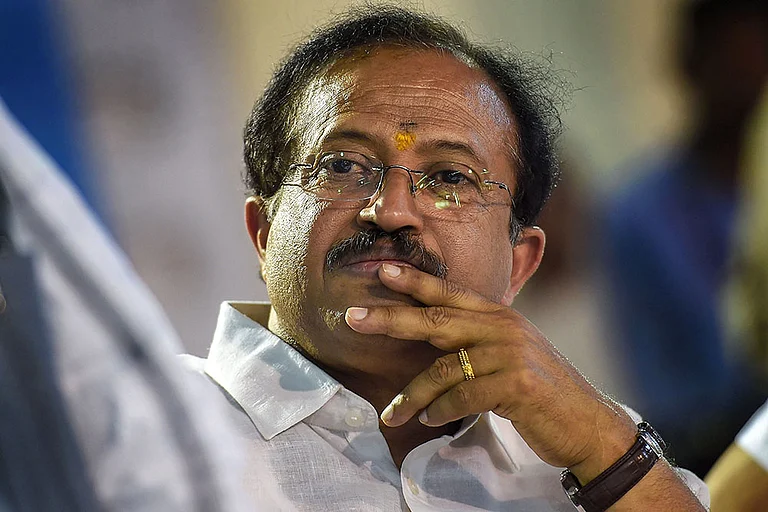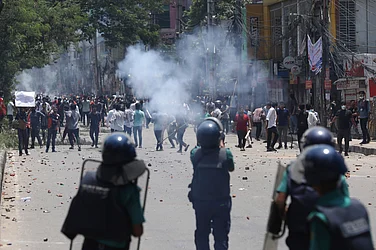The census of India’s poor began on June 29 in Tripura, in the Northeast, with a methodology Jairam Ramesh, who was made Union rural development minister in the recent reshuffle, didn’t get a chance to contribute to. It has some improvements over the method followed in the previous census, but the key contradictions in the process of identifying the poor continue.
Consider the dichotomy, and the resulting errors, of assessing poverty by income and by assets held, such as a house, land, consumer durables and the like. A person may have a high income but not assets. A methodology that gives weightage to income alone will count him among the rich and one that gives weightage to assets held will count him among the poor. And a methodology that goes by assets alone will deem a person who may have inherited some assets but has no income as rich when he doesn’t know where his next meal is coming from.
The old problem of setting cutoffs arises too. What is the cutoff level for income, expenditure, food consumption or asset holding below which a person may be deemed poor? As is well known, different panels have come up with different enumerations of India’s poor, based on different methodologies and cutoff levels: the Planning Commission says 28.3 per cent of Indians are poor, the N.C. Saxena panel gives twice that figure, the Arjun Sengupta panel says 77 per cent and the Tendulkar panel says 37.2 per cent.
The most crucial contradiction plaguing the poverty question—often with cruel results—arises out of the state’s need to limit the number of beneficiaries of welfare schemes. Working to the opposite purpose are equally powerful forces: the immense desire of the marginally poor to find a place on the list and the muscling in by vested political interests seeking to get groups they wish to gain influence with on the list. The deserving often get left out.
The present BPL census methodology tries to circumvent this problem by classifying households in three steps: 1) an exclusion criterion, ruling out those above a certain level; 2) using certain undisputed criteria—such as those living on alms, the destitute, manual scavengers, households without shelter etc—to ensure there’s no chance of these groups being excluded; 3) the rest are graded on the basis of various deprivation indicators, without etching a hard and fast poverty line to classify people above or below it. In short, it will be a queue system for most welfare schemes—like housing for the poor and pensions for widows and the aged.
But a cap will remain in force in the matter of food security, as is evident from the draft bill forwarded to the government by the NAC and various government pronouncements on the subject. Hence, it’s pertinent to take a close look at the criteria for exclusion, automatic inclusion and deprivation ranking and the guidelines issued to surveyors and data entry operators. Pilot surveys by citizens’ groups in the Bargarh and Ganjam districts of Orissa have shown up a few problems. There aren’t significant issues with 12 of the 13 criteria set for exclusion, based largely on employment in the organised sector, income or undisputed asset-based indicators of relative prosperity. But there’s an objection to excluding those who own or part-own mechanised fishing boats. This is because quite a few groups of really poor fishermen pool money to buy a ragtag boat for them to use together. Also being questioned is the exclusion of Mahadalits, single women, the disabled and households headed by minors—groups recommended for automatic inclusion by the Saxena committee.
The sharpest differences are over the indicators for ranking deprivation. Households living in just one room with kachcha walls and roofs are to be counted as poor, but potters, weavers and washermen who might have created a tiny workspace at home may find themselves excluded. For a criterion that takes pains to set the minimal dimensions of a room at an uninhabitable 2 metres long, 1.5 metres wide and 2 metres high, it does not address the practical problem of workspaces. Again, take those who are self-employed but don’t own land, such as weavers, fishermen, potters, toddy-tappers and so on. These groups aren’t counted as landless—who happen to be defined as “deriving the major part of their income from manual, casual labour”. Instead, they are counted as producers.
The point to ponder is: if we try to restrict the number of poor for a welfare ceiling, we are sure to end up having errors of inclusion or exclusion. So why not do away with laborious enumeration and the framing of elaborate criteria that one group or the other will dispute and instead devise imaginative, universal poverty alleviation schemes with built-in frameworks for self-selection, like the nrega?


























